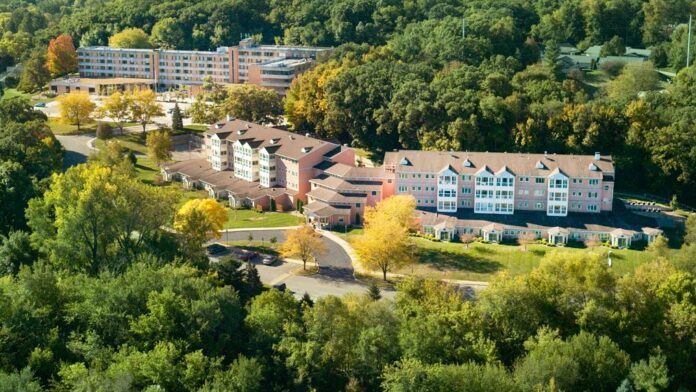
In a senior living community, the key word is community. Meth-Wick’s residents, donors, and staff all benefit from our mission to build an enriching environment on campus. One unique tool we use to accomplish this goal is our status as a not-for-profit organization.
You’re likely more familiar with the term nonprofit rather than not-for-profit. Neither earn revenue for their owners but they differ in terms of mission. A nonprofit must serve the public in some way while a not-for-profit solely serves the goals of its members.
The goal of our members, meaning our residents and donors, is clear and consistent. Meth-Wick exists to provide a community for older adults with lifestyle and care options for every stage.
Difference Between Not-For-Profit and For-Profit Companies
It’s all there in the name. For-profit companies have a duty to meet profit goals and issue dividends to stockholders. But as a not-for-profit, any revenue Meth-Wick generates beyond our operating expenses is immediately reinvested into the community rather than paid out to investors.
Meth-Wick doesn’t have investors. It has donors. Our donors – many of whom are residents and their families – also desire to a create a rewarding community. Without our not-for-profit status, we would need to add investors to this mix and temper our innovations to satisfy them.
Local Leadership
 It’s uncommon for a senior living community to operate as a not-for-profit organization. About 80% of senior living facilities operate on a for-profit basis, and half of them belong to national corporate chains where decisions are made in distant boardrooms. But as a local not-for-profit, decisions about how Meth-Wick operates are made by volunteers in our community.
It’s uncommon for a senior living community to operate as a not-for-profit organization. About 80% of senior living facilities operate on a for-profit basis, and half of them belong to national corporate chains where decisions are made in distant boardrooms. But as a local not-for-profit, decisions about how Meth-Wick operates are made by volunteers in our community.
Meth-Wick recently installed a new Board of Directors for the current fiscal year. The board is made up of 14 to 20 volunteers from the Cedar Rapids community. Meth-Wick recruits board members who bring diverse perspectives to the board, with expertise in healthcare, real estate, social work, finance, etc. Having a diverse board with knowledge of many aspects of senior living enriches our innovation process. Each one brings a unique vision to the team.
Freedom to Innovate
“In a for-profit company, the investors are powerful stakeholders,” says Meth-Wick’s Chief Financial Officer Ron Jaeger. “As a not-for profit, Meth-Wick is free from these pressures.”
Whether it’s new living facilities, updated staff areas, expanded health care options, or unique programming, a not-for-profit status allows the team at Meth-Wick to innovate as they see fit.
So, does it really make a difference if your senior living community is for-profit or not-for-profit?
“I believe it does,” Jaeger shares. “By removing the obligations to meet investor expectations for profits, Meth-Wick can pursue innovations which enhance the lifestyle of our residents, even if they don’t have an attractive return on investment.”
Meth-Wick has been committed to this model since the very beginning. In fact, our Articles of Incorporation require that the assets of Meth-Wick Community remain in a not-for-profit organization. We opened our doors in November 1961 and were officially recognized as a not-for-profit in 1962, a status we’ve maintained ever since.
This article is part of the “Building on Innovation” series celebrating Meth-Wick Community’s 60th Anniversary serving older adults in Cedar Rapids. From 1961 to today, Meth-Wick has been an innovative leader in the senior living market. We will be exploring this theme throughout the year on our blog.
Â
Â
Â